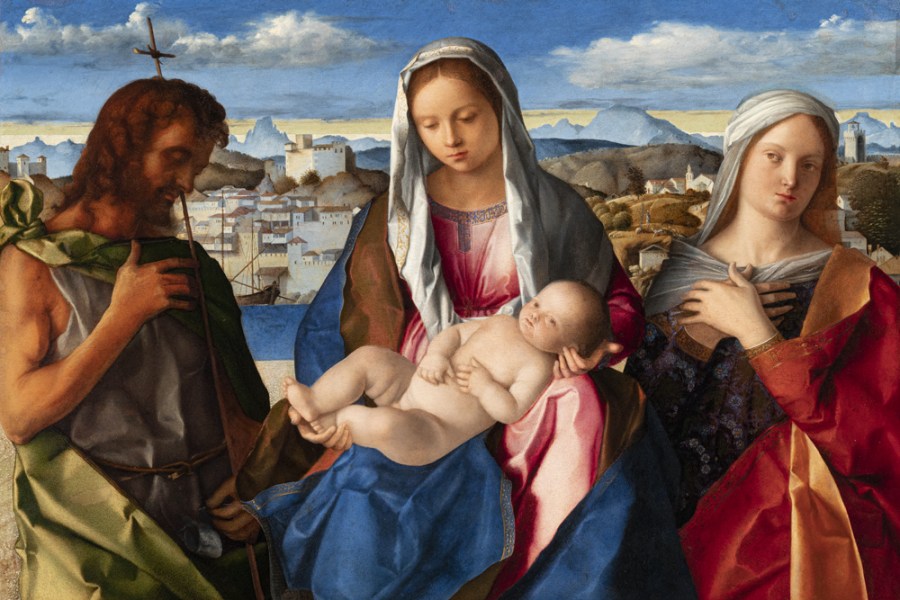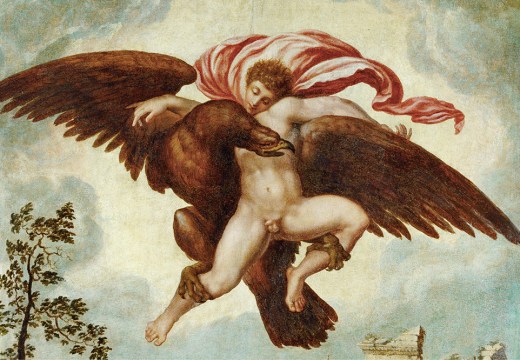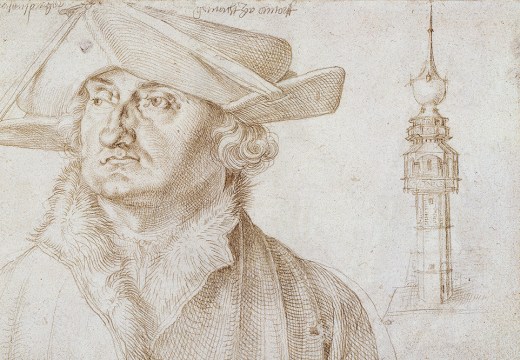From the May 2023 issue of Apollo. Preview and subscribe here.
When Albrecht Dürer visited Venice in 1505, he wrote home boasting that he had met ‘the very best of painters’: Giovanni Bellini. Despite his age – Bellini was likely over 70 by the time of their meeting – the veteran painter had asked the younger to make something for him. The incident speaks volumes about the lifelong curiosity of this most receptive of Renaissance artists, who continued to seek out the new.
This restlessness is the theme of a new exhibition at the Musée Jacquemart-André in Paris, curated by Neville Rowley and Pierre Curie. Demonstrating the adaptability of Bellini’s practice in response to a number of different artists and traditions, the project is a sequel, of sorts, to the ideas introduced by ‘Mantegna and Bellini’ in 2018/19 (at the National Gallery in London and the Gemäldegalerie in Berlin), which Rowley co-curated. But while Andrea Mantegna remains a consistent presence here, Bellini emerges as the more experimental figure. A feat of collaboration between French, German and Italian museums, the exhibition also shines a light on several fascinating works from private collections, some of which have not been seen in public for decades.
We are introduced to Giovanni Bellini as the illegitimate son of Jacopo Bellini, not his much younger brother, as has been suggested recently. He was born in Venice around 1435 and brought up alongside his half-brother Gentile and other siblings. Two early scenes from the life of the Virgin, painted together with Gentile for the Scuola Grande di San Giovanni Evangelista, show how his responsiveness was an asset – a means of fitting into this family of painters. The marriage of his sister Nicolosia to Mantegna, probably in 1453, brought Bellini into the latter’s orbit. As Rowley observes, it is tempting to think that some of Bellini’s earlier works may even have been sold as the work of Mantegna. The exhibition introduces Bellini’s oddness and his origins together, presenting his early training in the family workshop alongside the Jacquemart-André’s own Madonna and Child (c. 1500), a late and enigmatic painting which employs a slight sfumato in its dramatic lighting effects, to illustrate just how far Bellini was to travel in the course of his career.

Prudence (detail from Five Allegories) (c. 1490–95), Giovanni Bellini. Gallerie dell’Accademia, Venice. Photo: Archivah/Alamy Stock Photo
Visitors should not expect an exhaustive examination of the artist’s influences. Instead, Bellini is put in dialogue with his contemporaries through a select series of extraordinary juxtapositions. Perhaps the exhibition’s most extraordinary coup is the chance to see the five exquisite Allegories (c. 1490–95) on loan from the Accademia in Venice), which probably once adorned a mirror in the Bellini home, alongside a likely inspiration, Hans Memling’s Triptych of Earthly Vanity and Heavenly Redemption (c. 1485). Jan van Eyck’s Crucifixion (c. 1425) offers further evidence of Bellini’s interest in northern European art – particularly the detail and luminosity of Van Eyck’s work, then circulating in Italy. Antonello da Messina has long been cited as inspiration for Bellini’s developments in portraiture and his use of oil. Here, however, a splendid pairing of Antonello’s Dead Christ Supported by Three Angels (c. 1476) with Bellini’s earlier painting of the same subject from 1470–75 bears witness to the esteem the artists had for each other.

Allegory of Vanity (detail from Triptych of Earthly Vanity and Heavenly Redemption) (c. 1485), Hans Memling. Musée des Beaux-Arts, Strasbourg. Photo: Musées de Strasbourg/M. Bertola
Bellini did not look only to his contemporaries for inspiration. He was not averse to producing paintings with gold-leaf backgrounds when requested by patrons who had a taste for the gold grounds, mosaics and splendid metalwork associated with the Byzantine inheritance of Venice. His abilities in this regard are confirmed by an early Madonna, likely dating from before Mantegna’s marriage to Nicolosia, and the exhibition catalogue also makes a compelling connection between another Madonna of c. 1485 on display here and a gold-ground painting illustrated in Carpaccio’s Arrival of the Ambassadors (c. 1494). It is a shame that the earlier Madonna and a third in this room have 19th-century gilding, which distracts from Bellini’s debt to Byzantine compositional models, represented here by a contemporary Cretan icon.
Today, Bellini is best known for his serene paintings of the holy family seated within tranquil landscapes. A fine gathering of these paintings – including the Sacred Conversation Giovanelli (c. 1500), which anticipates Andrea Previtali’s sense of atmosphere and Lorenzo Lotto’s buoyancy – demonstrate the elder artist’s sideways glance towards the younger Cima da Conegliano, who glances at Bellini in turn. These later paintings also attest to Bellini’s interest in models presented by pupils such as Giorgione, as well as innovators from further afield. The most important of these artists – Perugino, Raphael, Leonardo – are not represented here, though this aspect of Bellini’s curiosity is taken up by Sara Menato in one of the catalogue’s excellent essays (it should be noted that the intimacy of the galleries precludes the presence of larger loans). The artist’s ongoing experimentation with different methods of recording and replicating paintings is indicated by a curious workshop drawing of the Virgin enthroned holding the infant Jesus that is pricked for transfer (c. 1505). This miniature grisaille cartoon is one of very few graphic works in the exhibition. Indeed, there is just one drawing in Bellini’s own hand, here shown beside Donatello’s emotive Pietà (c. 1450–53), on loan from the church of San Gaetano in Padua – a coup in this year of Donatello celebrations.

Mocking of Noah (c. 1515), Giovanni Bellini. Musée des Beaux-Arts et d’Archéologie, Besançon. Photo: © Leonard de Selva/Bridgeman Images
In the final room of the exhibition, we meet three old men who share a face: a Man of Sorrows signed by Vittore Belliniano (c. 1518–20), convincingly presented as a work begun by Giovanni himself; the magnificent God the Father (c. 1505–10), newly conserved for the show; and The Mocking of Noah (c. 1515), a painting sometimes interpreted as an allegorical self-portrait, which Roberto Longhi heralded as the first modern painting. It is a startling encounter, unlike any other you will have had with an artist who is often regarded as winsome, but who is here recast as restless, even strange. Bellini emerges as a magpie for innovation, who observed, borrowed and transformed the most diverse of visual sources.
‘Giovanni Bellini: Influences Croisées’ is at the Musée Jacquemart-André, Paris, until 17 July.
From the May 2023 issue of Apollo. Preview and subscribe here.
Unlimited access from just $16 every 3 months
Subscribe to get unlimited and exclusive access to the top art stories, interviews and exhibition reviews.














![Masterpiece [Re]discovery 2022. Photo: Ben Fisher Photography, courtesy of Masterpiece London](http://www.apollo-magazine.com/wp-content/uploads/2022/07/MPL2022_4263.jpg)
Has the Fitzwilliam lost the hang of things?